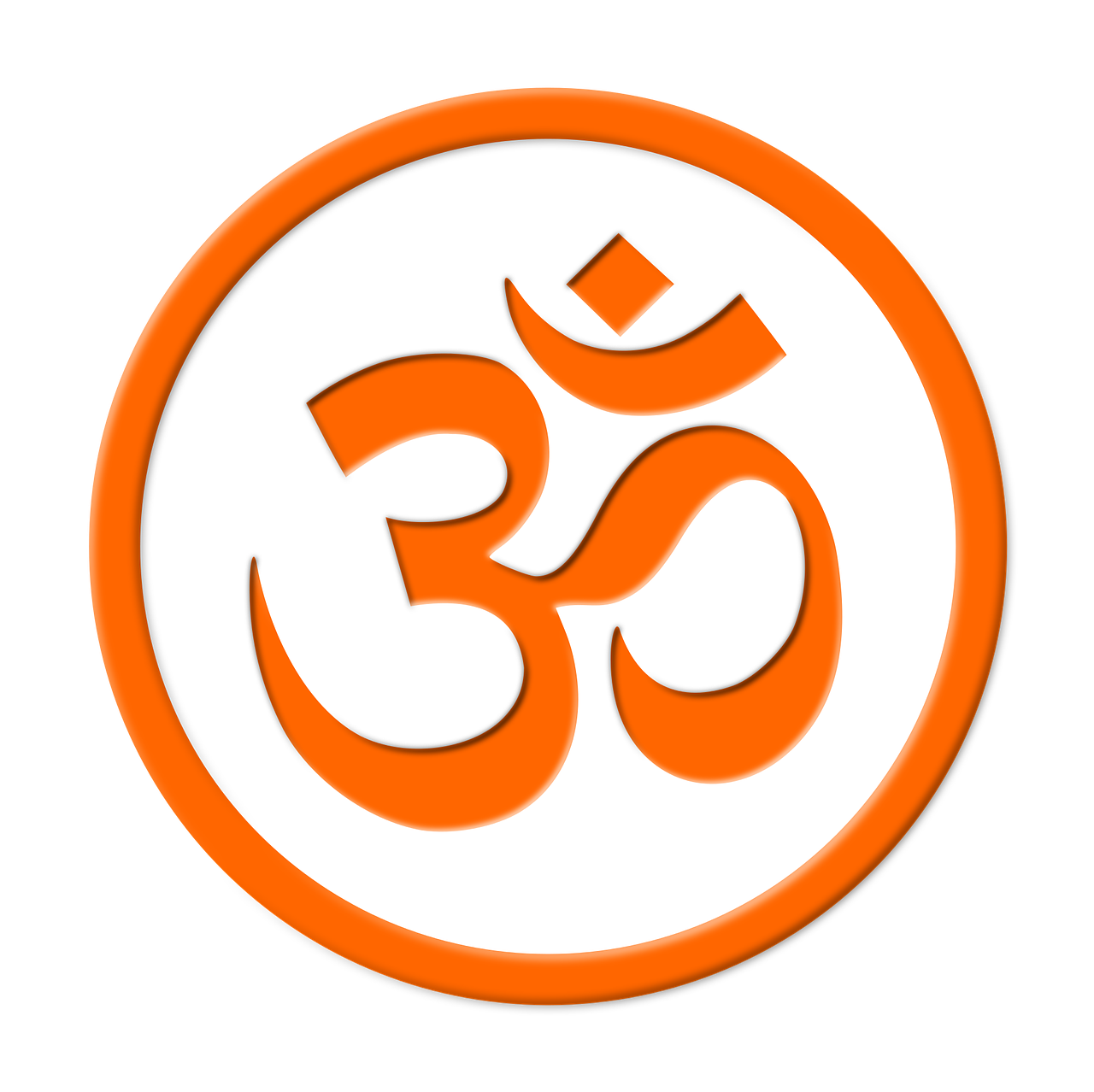Spiritual Meaning of Om (Aum)

Hey there, amazing readers! 🖐️ Just a quick note: yes, we know there are a lot of ads here. Trust us, we get it—it’s not the prettiest look, but they help us keep this blog alive and kicking. Those pesky little ads cover the costs of all the behind-the-scenes magic, from hosting and tech stuff to creating content we hope you’ll love.
We’re committed to delivering quality posts, and your support (even just sticking around despite the ads) means everything to us. So, bear with us, and thanks for helping us keep the good vibes rolling. Now, on to the fun stuff! 😉
TRANSLATE BUTTON AT THE END OF THE ARTICLE
Om (also spelled Aum) is a sacred sound and symbol in Hinduism, Buddhism, and Jainism.
It is considered to be the primal sound of creation, and is often chanted at the beginning and end of meditation and yoga practice.
The Om symbol is made up of three curves, a dot, and a crescent.
The curves represent the waking state, the dreaming state, and the deep sleep state of consciousness.
The dot represents the turiya state, or the fourth state of consciousness, which is beyond the waking, dreaming, and deep sleep states.
The crescent represents the illusion that separates us from our true nature.
The Om symbol is also said to represent the three aspects of God: Brahma (the creator), Vishnu (the preserver), and Shiva (the destroyer).
It is also said to represent the three Vedas, the sacred texts of Hinduism.
Spiritual Meanings of Om
Om has many different spiritual meanings, but some of the most common include:
The sound of creation: Om is said to be the primal sound of creation.
It is the sound that the universe made when it was first created.
The unity of all things: Om represents the unity of all things.
It reminds us that we are all connected to each other and to the divine.
The path to enlightenment: Om is the path to enlightenment.
It represents the journey from ignorance to knowledge, from darkness to light, and from death to life.
The fourth state of consciousness: Om is the fourth state of consciousness, or the turiya state.
This is a state of pure awareness, beyond the waking, dreaming, and deep sleep states.
How to Use Om in Your Spiritual Practice
There are many different ways to use Om in your spiritual practice.
Here are a few ideas:
Chant Om: Chanting Om is one of the most common ways to use it in your spiritual practice.
You can chant Om silently or aloud, and you can chant it for as long or as short as you like.
Meditate on Om: You can also meditate on the Om symbol.
To do this, simply sit quietly and focus on the Om symbol.
You can visualize the Om symbol in your mind’s eye, or you can draw the Om symbol on a piece of paper and focus on it.
Use Om in your affirmations: You can also use Om in your affirmations.
For example, you could say, “I am one with the universe” or “I am on the path to enlightenment.”
Use Om to bless yourself and others: You can also use Om to bless yourself and others.
To do this, simply place your hand on your heart center or on the heart center of the person you are blessing, and visualize the Om symbol flowing with healing energy and love.
Benefits of Using Om in Your Spiritual Practice
There are many benefits to using Om in your spiritual practice.
Some of the benefits include:
Reduced stress and anxiety: Chanting Om can help to reduce stress and anxiety.
It can also help to promote relaxation and peace of mind.
Increased concentration and focus: Chanting Om can also help to improve concentration and focus.
This can be beneficial for meditation, yoga, and other spiritual practices.
Deeper spiritual connection: Chanting Om can also help to deepen your spiritual connection.
It can help you to connect to your higher self and to the divine.
The Science of Om
In addition to its spiritual significance, Om has also been shown to have a number of scientific benefits.
For example, studies have shown that chanting Om can:
Lower blood pressure
Improve heart health
Boost the immune system
Reduce pain
Improve sleep quality
One way that Om may produce these benefits is through its effect on the vagus nerve.
The vagus nerve is the longest nerve in the body, and it connects the brain to many different organs, including the heart, lungs, and stomach.
When the vagus nerve is stimulated, it can send signals to the body to relax and heal.
Chanting Om has been shown to stimulate the vagus nerve, which may be why it has so many health benefits.
Om in Different Spiritual Traditions
Om is used in a variety of different spiritual traditions.
Here are a few examples:
Hinduism: Om is the most sacred sound in Hinduism.
It is chanted at the beginning and end of every Hindu prayer or ceremony.
Om is also used in meditation and yoga practice.
Buddhism: Om is also used in Buddhism.
It is often chanted at the beginning and end of meditation practice.
Om is also said to represent the three bodies of the Buddha: the dharmakaya (Dharma body), the sambhogakaya (enjoyment body), and the nirmanakaya (transformation body).
Jainism: Om is also used in Jainism.
It is often chanted at the beginning and end of meditation practice.
Om is also said to represent the three jewels of Jainism: right knowledge, right faith, and right conduct.
How to Chant Om
There are many different ways to chant Om.
Here is a basic method:
Sit in a comfortable position with your spine straight.
Close your eyes and take a few deep breaths.
On an exhale, begin to chant Om.
Chant Om for as long as you like.
You can chant it for a few minutes or for several hours.
When you are finished chanting Om, take a few deep breaths and open your eyes.
You can chant Om silently or aloud.
You can also chant Om in a high or low pitch.
There is no right or wrong way to chant Om.
The most important thing is to chant it with sincerity and respect.
Tips for Chanting Om
Here are a few tips for chanting Om:
Find a quiet place where you will not be disturbed.
Sit in a comfortable position with your spine straight.
Close your eyes and relax your body.
Focus on the sound of Om as you chant it.
Don’t worry about the pitch or volume of your chanting.
Just chant Om in a way that feels comfortable for you.
Be patient and persistent.
It may take some time to learn how to chant Om properly.
Conclusion
Om is a powerful and versatile spiritual symbol and sound.
It can be used to connect to the divine energy within yourself and in the world around you.
It can also be used to support your personal transformation and to improve your overall well-being.
If you are interested in using Om in your spiritual practice, there are many different ways to do it.
You can chant Om, meditate on the Om symbol, use Om in your affirmations, or use Om to bless yourself and others.
No matter how you choose to use Om, it is important to do so with sincerity and respect.
Om is a sacred sound and symbol, and it should be treated with reverence.

The Enlightenment Journey is a remarkable collection of writings authored by a distinguished group of experts in the fields of spirituality, new age, and esoteric knowledge.
This anthology features a diverse assembly of well-experienced authors who bring their profound insights and credible perspectives to the forefront.
Each contributor possesses a wealth of knowledge and wisdom, making them authorities in their respective domains.
Together, they offer readers a transformative journey into the realms of spiritual growth, self-discovery, and esoteric enlightenment.
The Enlightenment Journey is a testament to the collective expertise of these luminaries, providing readers with a rich tapestry of ideas and information to illuminate their spiritual path.
Our Diverse Expertise 🌟
While our primary focus is on spirituality and esotericism, we are equally passionate about exploring a wide range of other topics and niches 🌍📚. Our experienced team is dedicated to delivering high-quality, informative content across various subjects ✨.
To ensure we provide the most accurate and valuable insights, we collaborate with trusted experts in their respective domains 🧑🏫👩🏫. This allows us to offer well-rounded perspectives and knowledge to our readers.
Our blog originally focused on spirituality and metaphysics, but we’ve since expanded to cover a wide range of niches. Don’t worry—we continue to publish a lot of articles on spirituality! Frequently visit our blog to explore our diverse content and stay tuned for more insightful reads.







